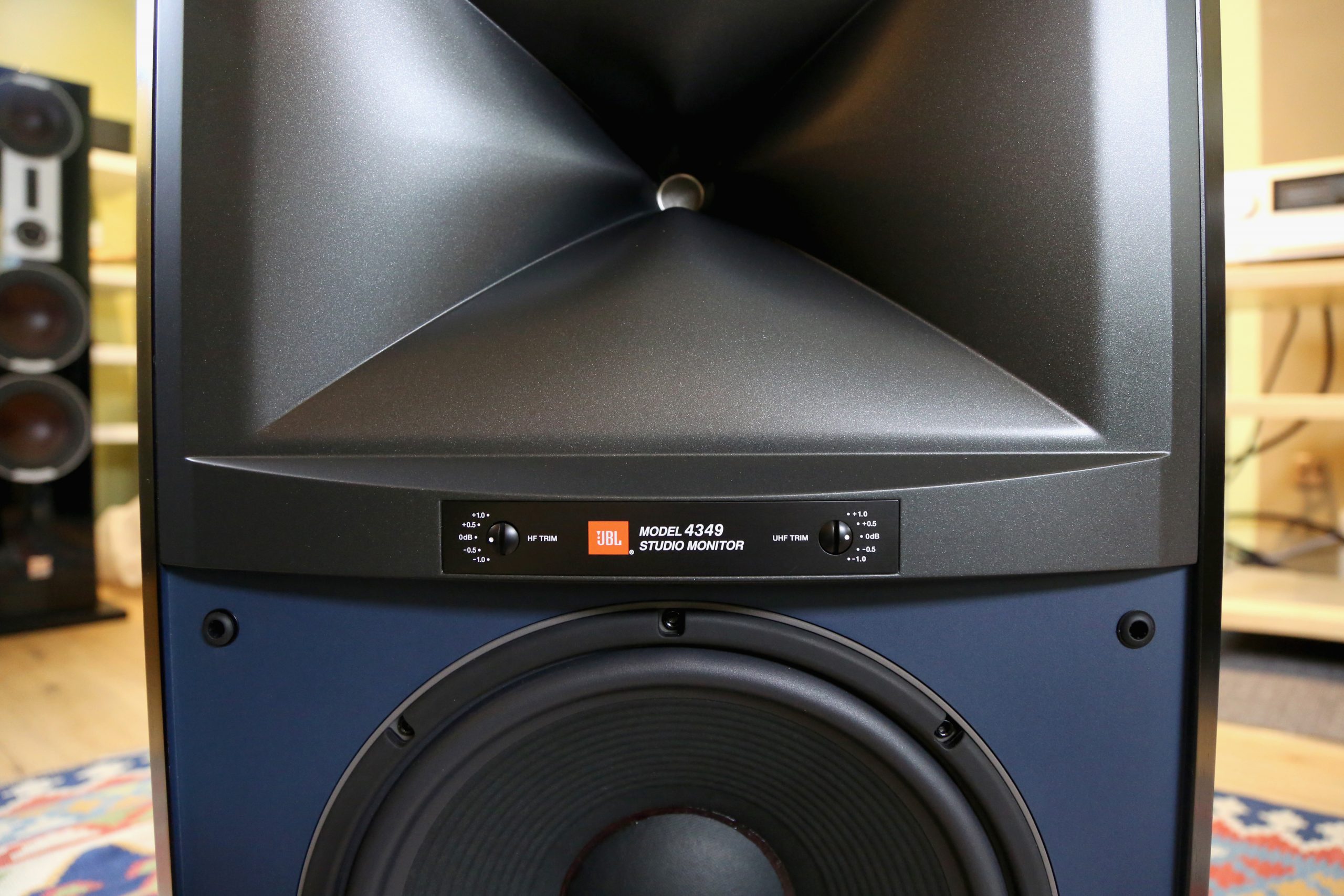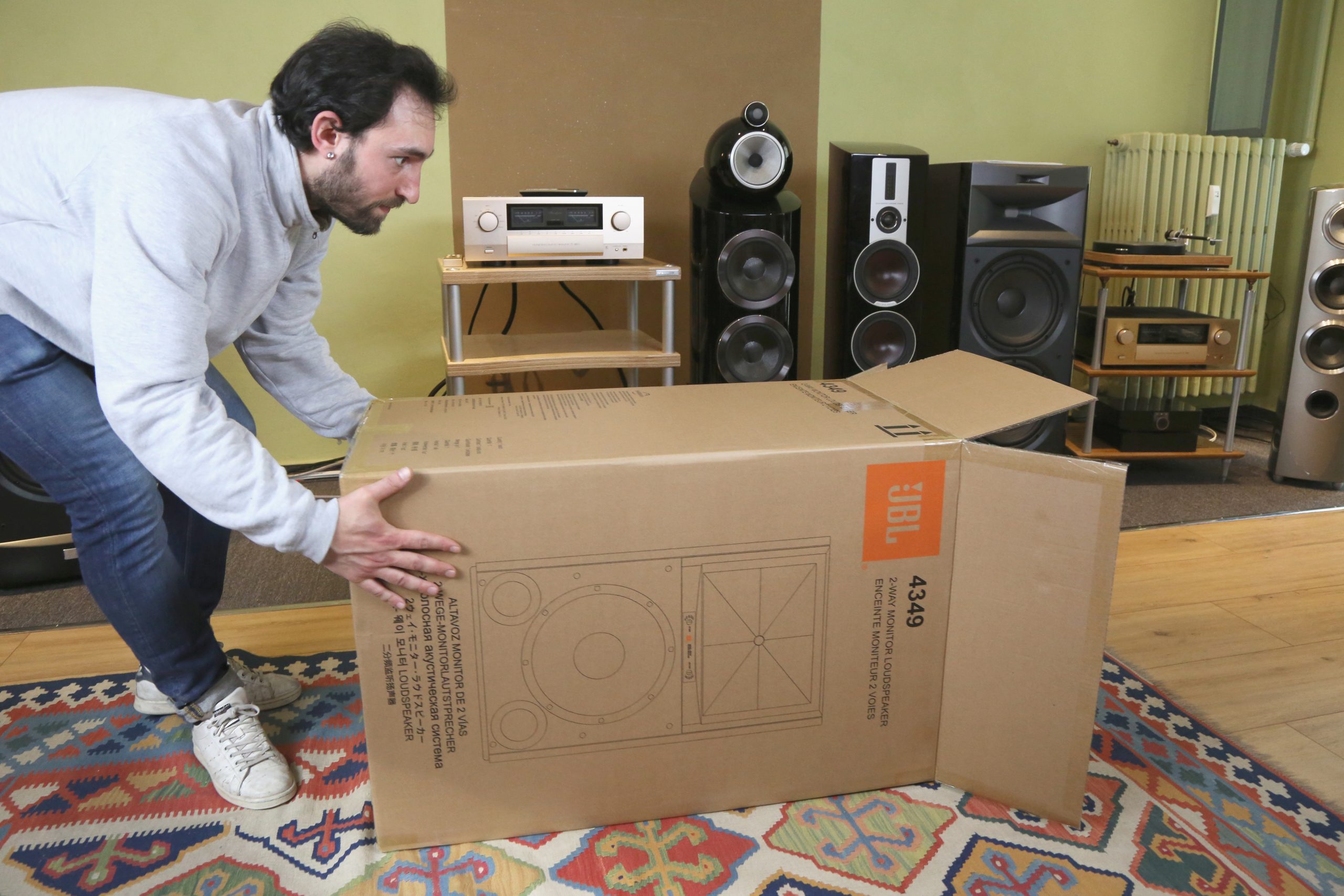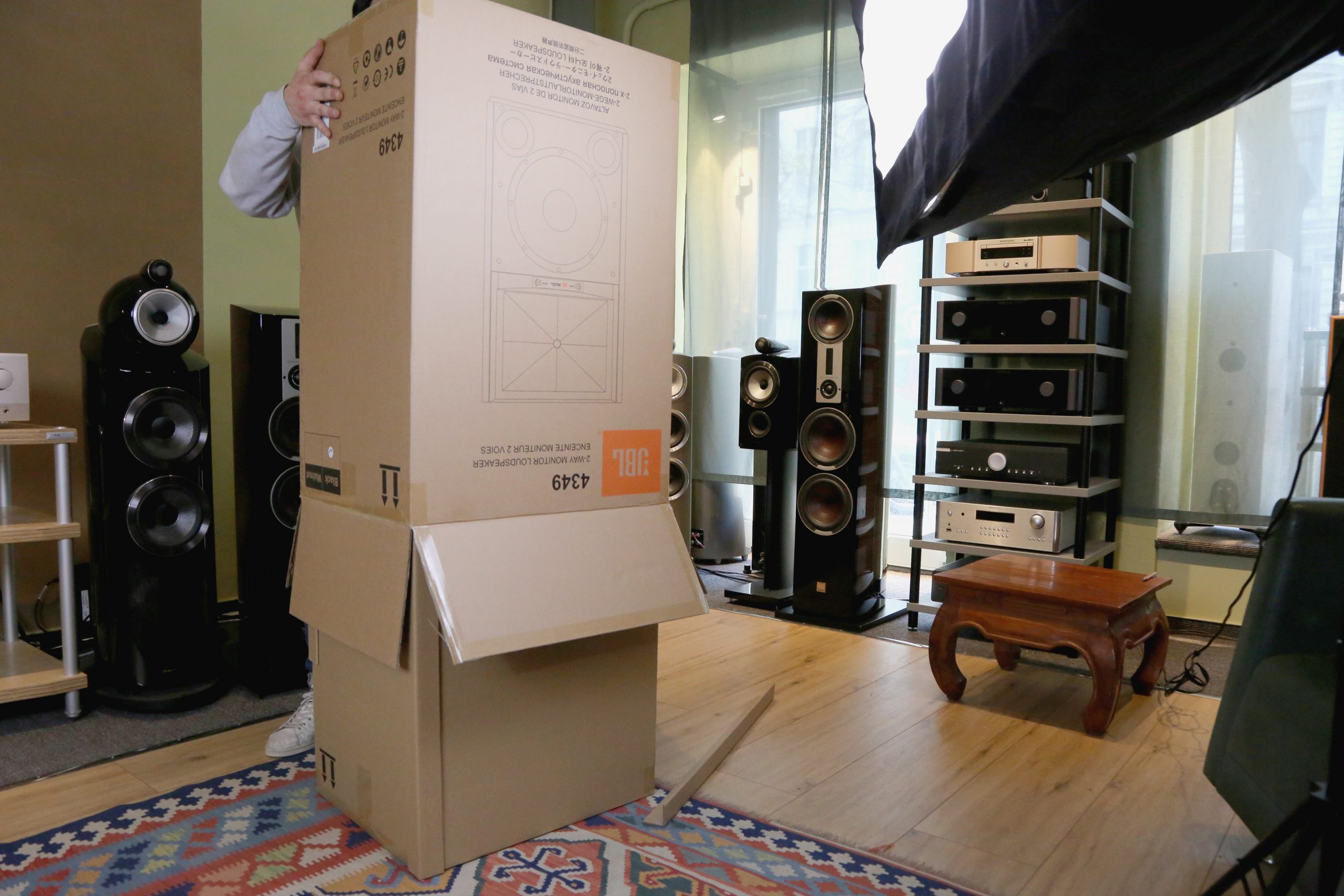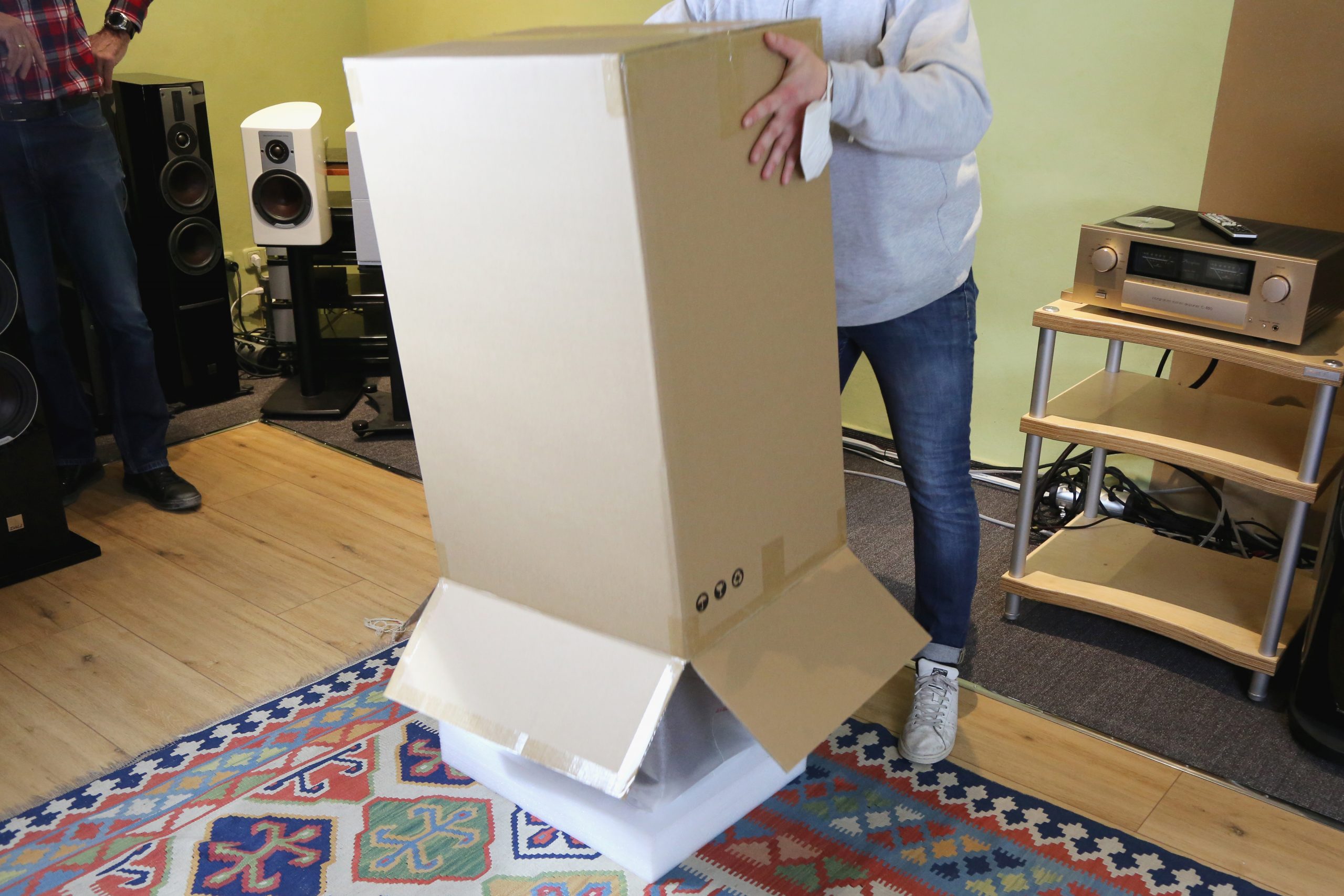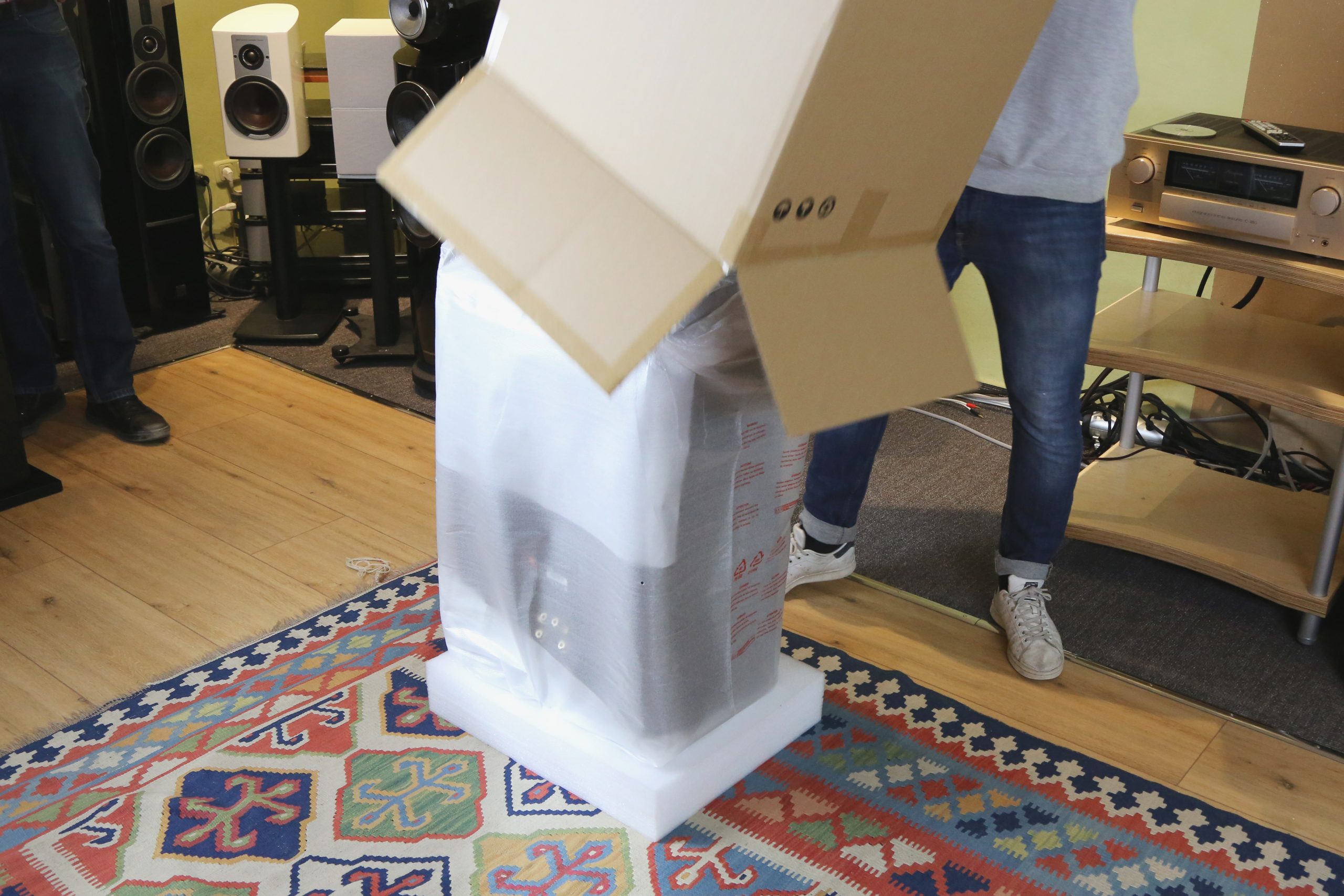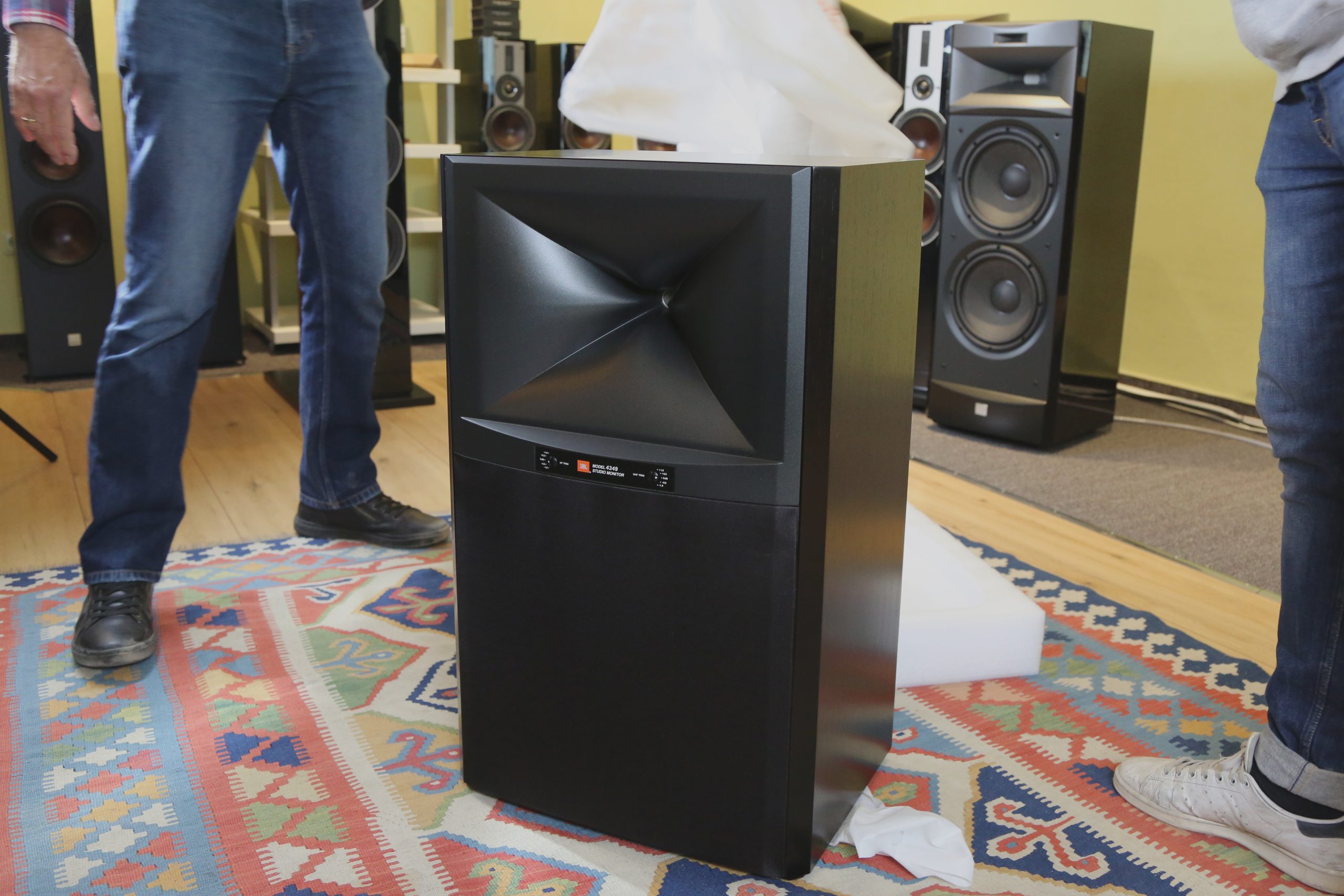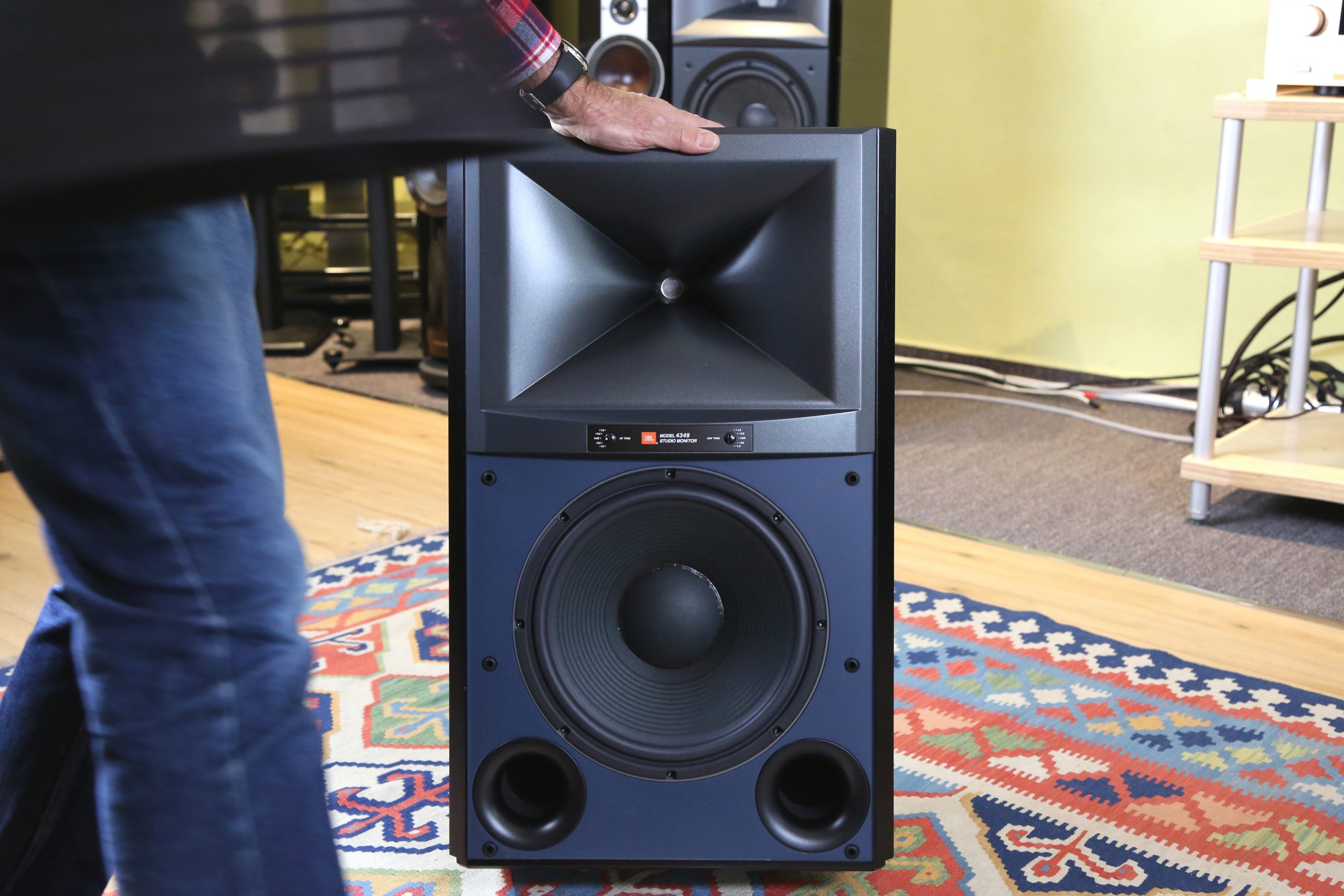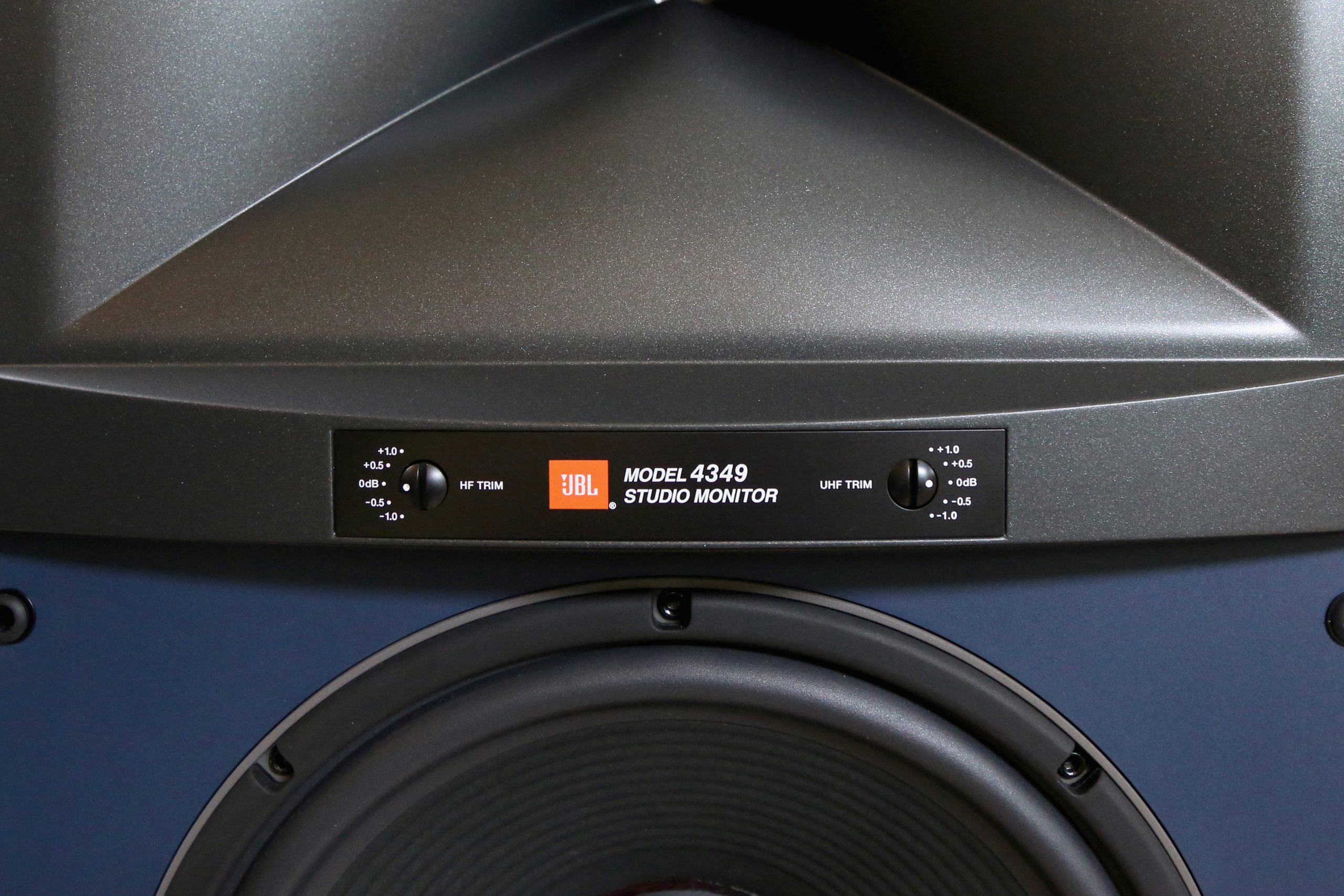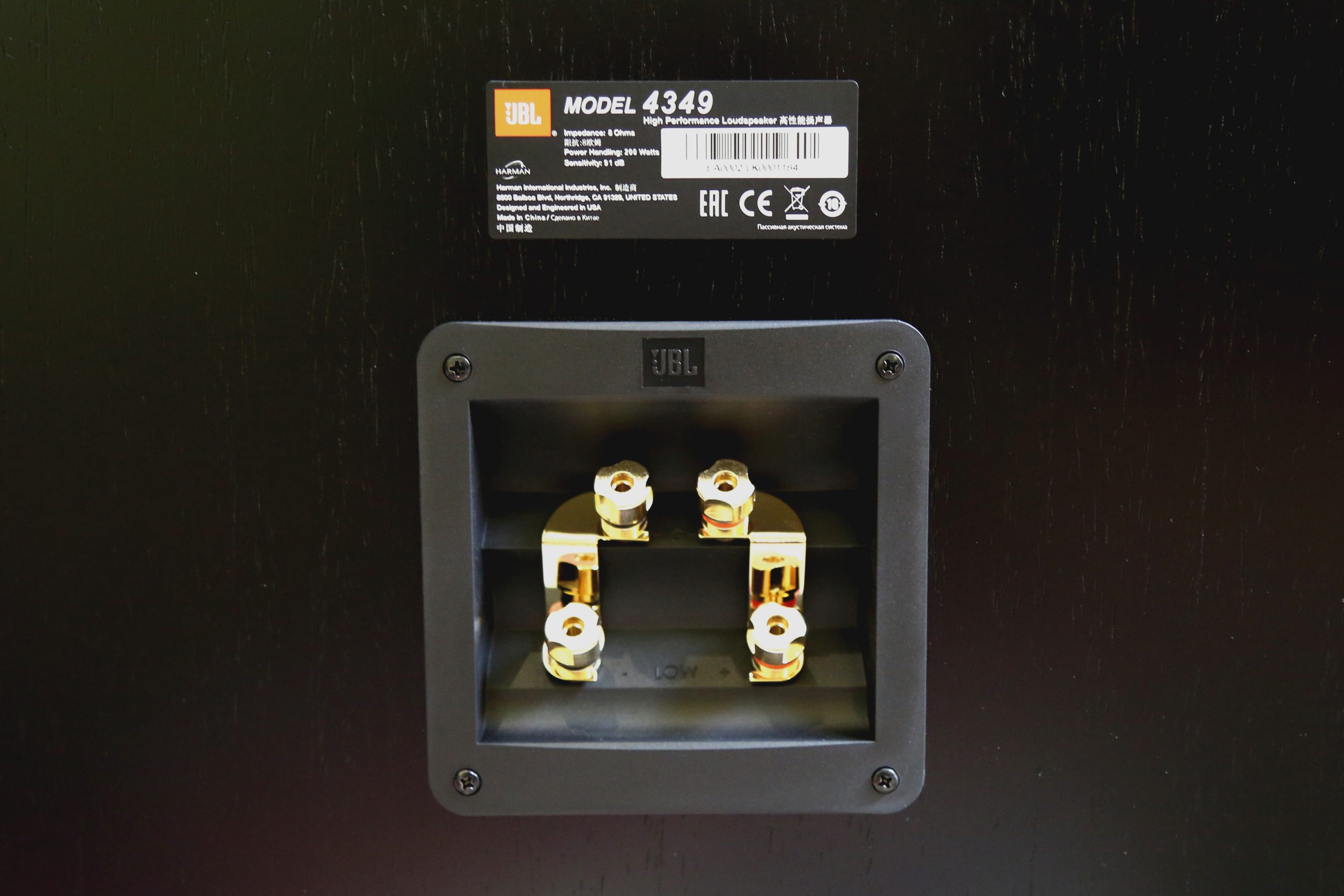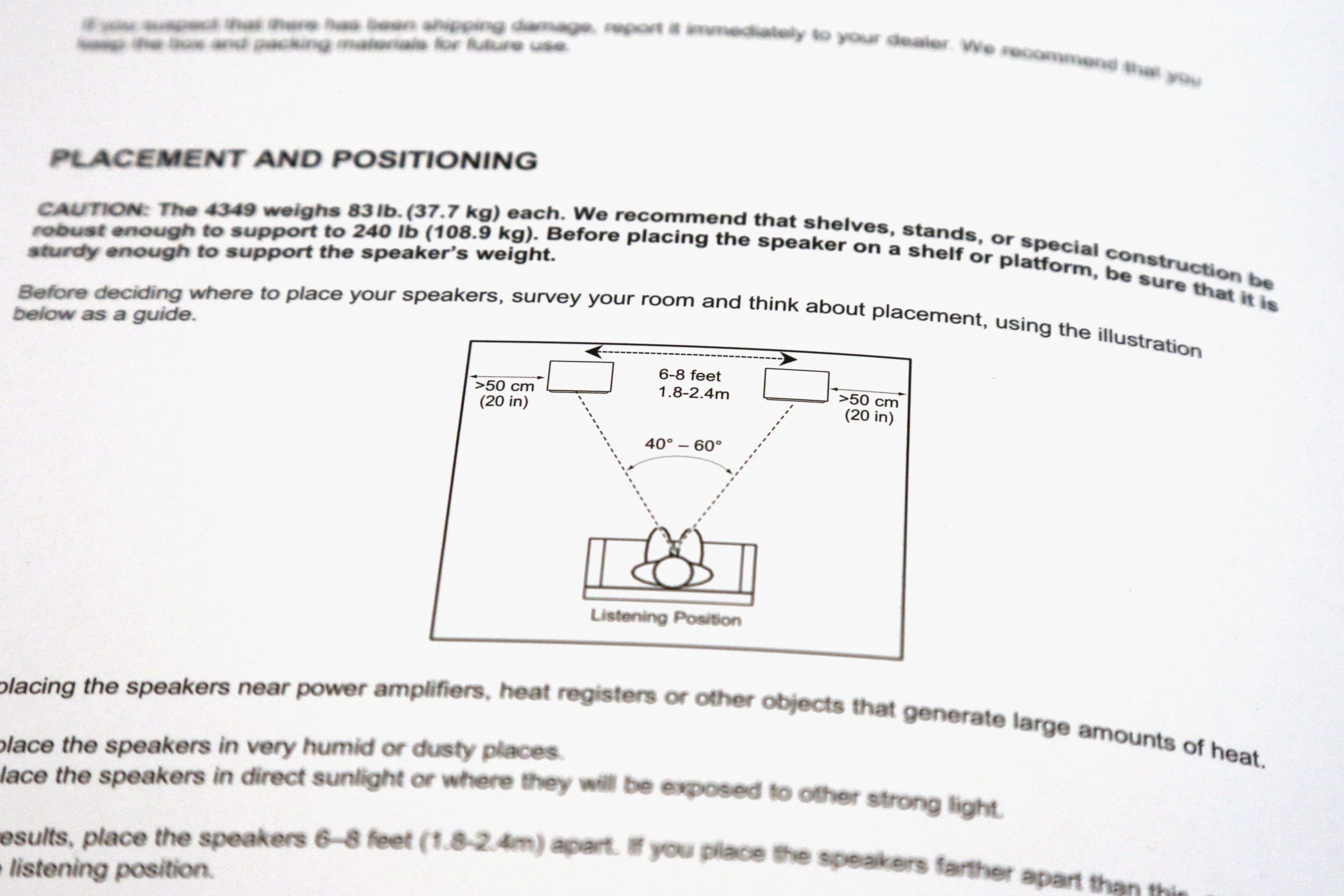The classic-looking design of the JBL 4349 2-way studio monitor brings to mind the construction of models from the 70s and 80s. In particular, the speaker evokes memories of the old JBL 4425, which had exactly the same key data and also featured a 12-inch bass-midrange driver and a horn with dispersion angles of 100×100 degrees. After the success of JBL’s L 100, the Americans are obviously jumping on the retro look trend more and more. However, this is always done without making their speakers look old-fashioned.
Behind the 1.5-inch “high-definition imaging horn” is the quite newly developed D2415K compression driver. The “D” in the designation indicates the use of a dual driver. This driver has two diaphragms, two voice coils, and two motors, which are arranged directly behind each other. Thanks to this design, distortions and time smearing can be reduced to a minimum even at extreme volumes. The driver is already known from various other high-end models from JBL.
Despite the rather high crossover frequency of 1500 Hertz, the design of the 4349 allows a seamless transition between the high and low-mid drivers made of pure pulp. JBL developed the latter specifically for this monitor, as the only other JBL driver of this size, the 2206H, would have been far too loud for the intended use, or would not have gotten down low enough in the bass. The surround used is not a hard clamped PA driver, but a model made of rubber, which allows a lower resonant frequency and greater stroke.
The 2.5 cm thick cabinet walls are heavily braced, creating a solid acoustic foundation. Available in two finishes, the studio monitor is either set in a walnut wood veneer with a blue grille or a satin black walnut wood veneer with a black grille. In both variants, JBL again references the classic JBL studio monitor design with a blue baffle. On this baffle, the two front-facing bass reflex ports are also found under the 12-inch woofer.
In addition, the 2-way speaker has a “high frequency” and “ultra-high frequency” attenuation control on the front panel below the horn. With these, the crossover behavior and the sound can be adjusted to the listening environment and not least to one’s own preferences.
On the rear panel, the speaker has two sets of gold-plated binding posts, which allow for a secure connection both in “normal mode” and when connecting in bi-amping mode.
The separately available JS-120 stand offers the speaker – as was already the case with the L100 Classic – not only higher stability but also allows the angle of the speaker to be adjusted according to the listening position. Conveniently, JBL already provides instructions for the ideal placement of the speakers in the booklet.
Final Thoughts
The 2-way monitor speaker from JBL is primarily a professional model from the studio area, but its neutral sound drawing makes it interesting for the hi-fi community as well. In a sea of coloring speakers, the 4349 is a welcome alternative due to its precision. For use in the studio, the very analytical sound of the speaker may be desirable, but the question of whether this is also the case for leisurely “unprofessional” music enjoyment, you have to ask yourself in case of doubt.
